The Etruscan tombs were of various types although those carved into the rock were the dominant type. Most tombs are round structures with a door leading to a large interior chamber that is brightly painted to reflect the interior of an Etruscan house.
Etruscan Tomb Paintings Ancient Man And His First Civilizations
Seen on sarcophagi and tomb paintings and Etruscan tombs are commonly likened to representations of banquets in non-funerary domestic buildings and tombs are often contexts as elucidated above indicates that the conceived of in scholarship.
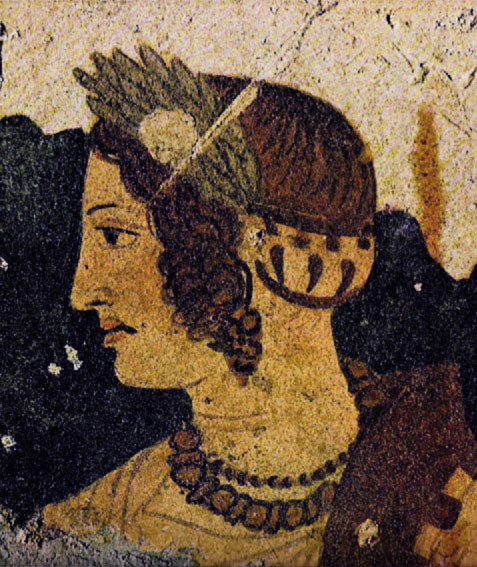
. During the Archaic period 600480 BCE the Etruscan culture flourished. This was manifested in its typical way of burial with sarcophagi though in its early stages they also used funerary urns. Etruscan art around the 8th4th centuries bc The Art of Etrurias People The Etruscans art is divided into three categories.
But their activities were necessarily far more limited in scope than those taken in by the all-powerful heads of a centralized hieratic. The tombs and tomb-paintings of Etruria constitute a field of archaeology in which the investigator is particularly apt to be reminded of numerous sins of omission and to be haunted by a painfully uneasy conscience. The art of the Etruscans who flourished in central Italy between the 8th and 3rd century BCE is renowned for its vitality and often vivid colouring.
Tomb interiors also contain much information about Etruscan life. In the much shorter-lived Etruscan civilization the wealthy citizens of the various semi-independent cities were buried in tombs where their way of living--far closer to the ordinary behavior of common people--was depicted in wall paintings. The Tomb of Hunting and Fishing and the Tomb of the Leopards depict typical Etruscan funerary imagery in a common Etruscan painting style.
Tomb paintings suggest that gladiatorial contests could have had their origin in these funeral games. This section also begins to tackle two major problems. Etruscans imagined the life after death which was a significant part of their religious.
The third floor had a gorgeous view of the city and contained transferred Etruscan tombs and other objects found at the sites. Tombs were often highly decorated with details of funeral rites detailing funeral feasts and processions the gods of the underworld and the games used to commemorate the dead. Area named for the Etruscans.
The teams research is ongoing and more paintings may be revealed in the. Etruscan painting technique was characterized by painting directly on fresh plaster so that the paint adhered to the plaster and thusly became part of the wall itself. The Etruscans began building stone and wood temples and creating subterranean tombs.
Etruscan sculpture is different from Greek sculpture in that in Etruscan art. The sculpture of Capitoline Wolf the She-Wolf represents an episode concerning. Summarizes recent work that now has determined more precisely the span of Etruscan tomb painting.
Most remains of Etruscan funerary art have been found in excavations of cemeteries as at Cerveteri Tarquinia Populonia Orvieto Vetulonia Norchia meaning that what we see of Etruscan art is primarily dominated by depictions of religion and in particular the funerary cult whether or not that is a true reflection of Etruscan art as a whole. Figure that looked like a red blob in a 2500-year-old Etruscan tomb painting is revealed Scientists using a new technique have uncovered the colorful and once-hidden scenes in paintings of the ancient Etruscans a group of people who flourished on the Italian peninsula around 2500 years ago at a time before Rome became powerful. Many surviving paintings are those on wall frescoes at burial sites.
This shows that these roofs might corroboration between the banqueting motifs equally be compared to domestic structures. Funeral urban and holy. It was usually created by artists who worked for the families that owned the tombs or temples where they lived.
Indeed the older archaeologists have less reason to plead guilty before the bar of science than those of more. That very few Etruscan painted tombs are found intact and that the iconography is more difficult to interpret than previously believed. The tomb was discovered in the 19th century but now with the new technology the painting has become much more visible.
Wall paintings were especially vibrant and frequently capture scenes of Etruscans enjoying themselves at parties and banquets. The Etruscan civilization was always influenced by the Ionian Greek culture. Floor plan of the Volunni tomb in Perugia.
Tomb paintings Etruscan were funeral rites or optimistic scenes of aristocratic pleasures of----- Tomb of the Augurs in Tarquinia The figures stand on a horizontal ground line flanking the closed door leading to the underworld. The tombs usually have massive reserve piers with Ionic-like capitals. Funeral art includes tomb paintings statues for cremation urns and metalwork.
Archaic Etruscan art often includes terra cotta statues that are stylistically and aesthetically Etruscan but influenced by Greek art. These homes frequently have symbols of the Etruscan lifestyle on their walls. Subject of The Paintings on The Tomb Walls.
The tombs were in the towns such as Tarquinia Cerveteri Chiusi and Vulci and the paintings on the walls depicted the lively and colorful scenes from the Etruscan mythologies daily lives and tomb occupants. This floor was my personal favorite because of the interesting drawings on the potteries. The founding of Rome It depicts the story of Romulus and Remus which is an act set before the founding of Rome Etruscan temples resemble Greek temples in that.
Later techniques included those such as chiaroscuro which gives greater depth and value. The scenes relate to Etruscan culture and society and show the inclusion of women in a symposium and a close connection to nature. Most of the potteries were however Greek in origin that were taken by the Etruscan and put in their tombs.
Etruscan Tomb Paintings Ancient Man And His First Civilizations

Etruscan Tomb Paintings World History Encyclopedia
Etruscan Tomb Paintings Ancient Man And His First Civilizations
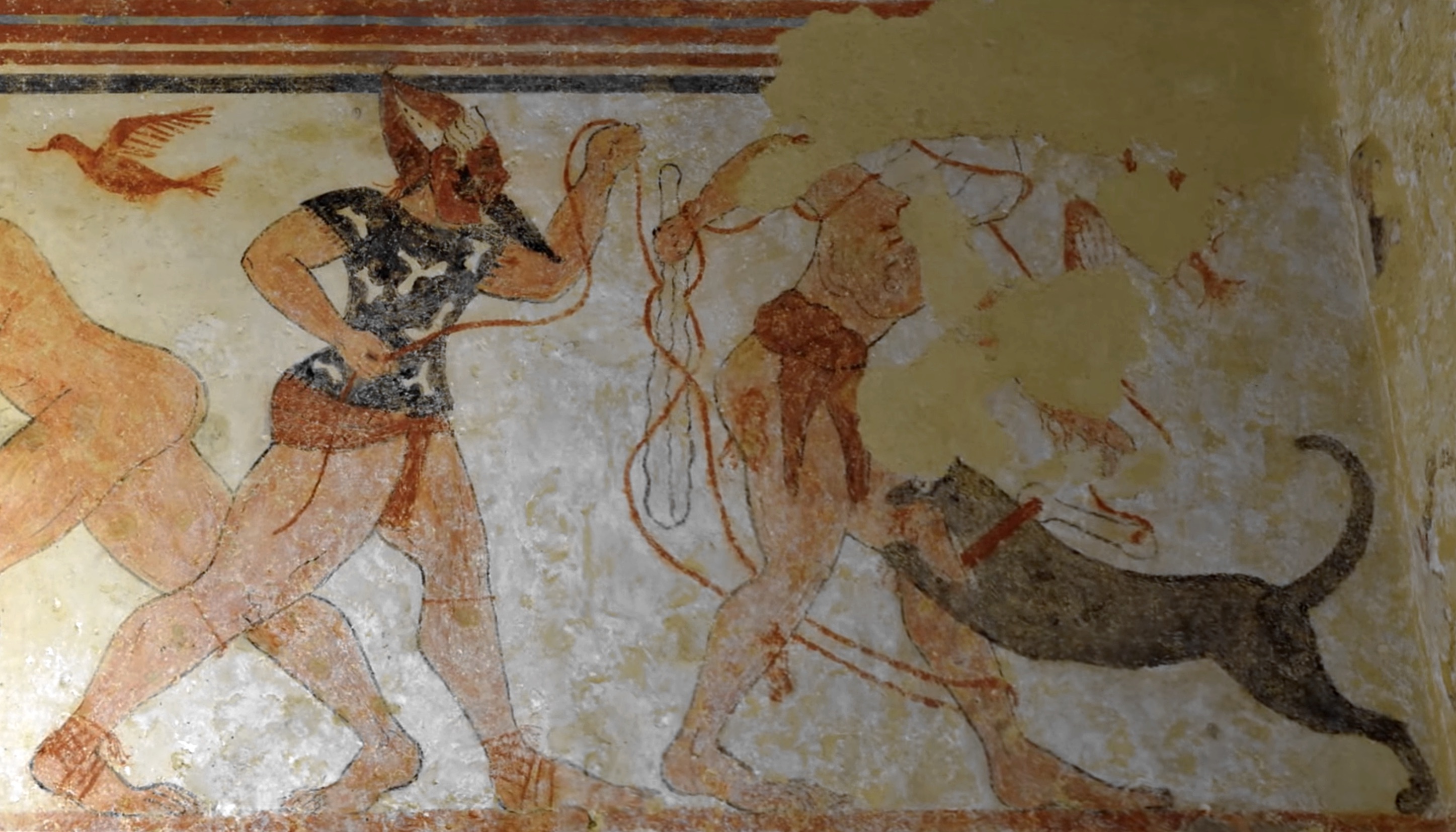
The Etruscans An Introduction Smarthistory
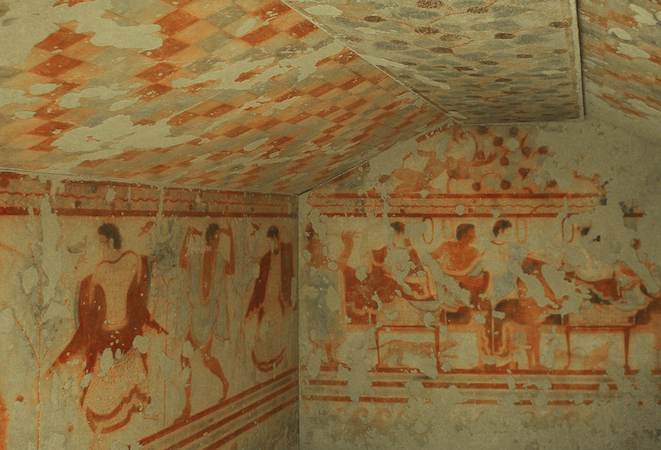
Tomb Of The Triclinium Article Khan Academy
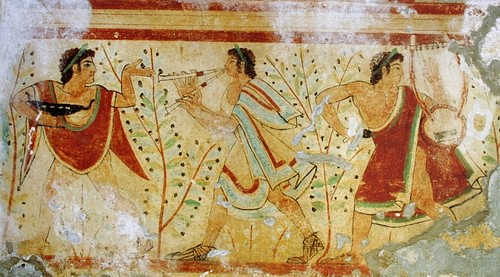
Etruscan Tomb Paintings World History Encyclopedia
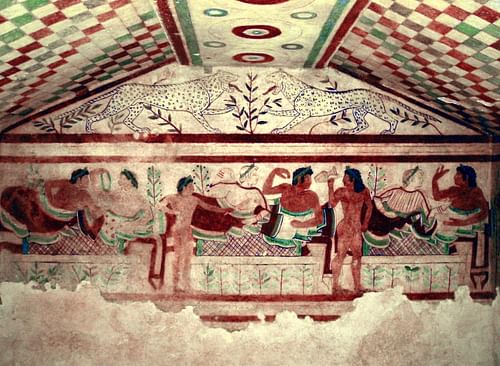
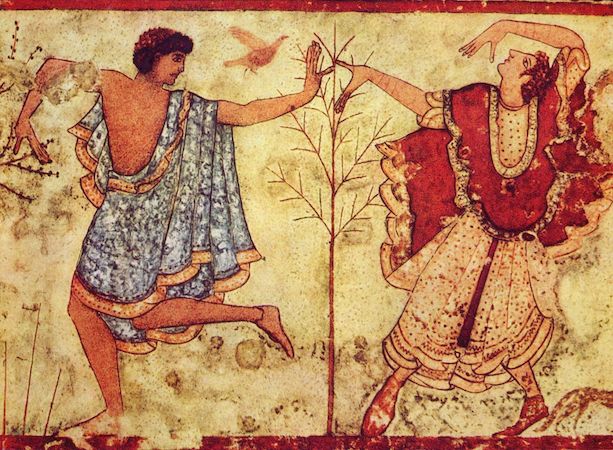
0 comments
Post a Comment